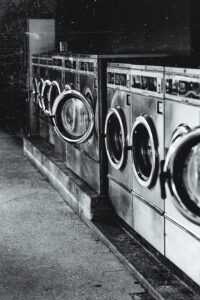Appliances play a crucial role in our daily lives, making our tasks easier and more convenient. However, when these appliances break down, it can be frustrating and disruptive. That’s why troubleshooting appliances is an essential skill that can save you time and money. By knowing how to diagnose and fix common appliance problems, you can avoid costly repairs or the need for a replacement.
Key Takeaways
- Troubleshooting appliances can save you money and time by avoiding costly repairs or replacements.
- Common appliance problems include faulty wiring, broken parts, and clogged filters.
- Essential tools for troubleshooting appliances include a multimeter, screwdrivers, and pliers.
- Safety precautions when troubleshooting appliances include unplugging the appliance and wearing protective gear.
- Diagnosing refrigerator problems may involve checking the thermostat, condenser coils, and door seals.
Understanding Common Appliance Problems
Understanding common appliance problems is the first step in troubleshooting. Some of the most common issues include appliances not turning on, not heating or cooling properly, making strange noises, or leaking. To identify the problem, start by observing the appliance’s behavior and listening for any unusual sounds. Check if there are any error codes displayed on the appliance’s control panel. Additionally, inspect the appliance for any visible signs of damage or wear.
Tools Needed for Troubleshooting Appliances
Having the right tools is crucial for effective troubleshooting. Some essential tools for troubleshooting appliances include a multimeter, screwdrivers (both flathead and Phillips), pliers, wire strippers, and a flashlight. A multimeter is particularly useful for testing electrical connections and determining if there is a power issue. Screwdrivers are needed to remove panels and access internal components. Pliers are useful for gripping and manipulating wires, while wire strippers are necessary for removing insulation from wires.
Safety Precautions when Troubleshooting Appliances
| Safety Precautions | Description |
|---|---|
| Disconnect Power | Always unplug the appliance or turn off the circuit breaker before troubleshooting. |
| Wear Protective Gear | Wear gloves, safety glasses, and other protective gear to prevent injury from sharp edges or electrical shock. |
| Use Proper Tools | Use insulated tools and equipment designed for electrical work to avoid electrical shock. |
| Read the Manual | Read the appliance manual and follow the manufacturer’s instructions for troubleshooting and repair. |
| Work in a Safe Area | Work in a well-lit, dry area with good ventilation to avoid accidents and exposure to hazardous materials. |
| Don’t Work Alone | Always have someone nearby in case of an emergency or accident. |
Safety should always be a top priority when working with appliances. Before starting any troubleshooting or repair work, make sure to unplug the appliance or turn off the circuit breaker to prevent electrical shocks. Wear protective gear such as gloves and safety glasses to protect yourself from sharp edges or flying debris. Avoid working on appliances that are wet or in contact with water to prevent electrical hazards. If you’re unsure about any aspect of the troubleshooting process, it’s best to consult a professional.
Diagnosing Refrigerator Problems
Refrigerators are one of the most important appliances in our homes, and when they malfunction, it can lead to spoiled food and inconvenience. Common refrigerator problems include not cooling properly, leaking water, or making strange noises. To diagnose these issues, start by checking the temperature settings and ensuring that the condenser coils are clean. If the refrigerator is leaking water, inspect the water supply line and the drain pan for any clogs or leaks. Strange noises can be caused by a faulty fan motor or a worn-out compressor.
Diagnosing Oven Problems

Ovens are another essential appliance in our kitchens, and when they stop working, it can disrupt our cooking routines. Common oven problems include not heating evenly, not reaching the desired temperature, or not turning on at all. To diagnose these issues, start by checking the power supply and ensuring that the oven is properly plugged in. If the oven is not heating evenly, it could be due to a faulty heating element or a malfunctioning thermostat. If the oven is not reaching the desired temperature, it may need recalibration or a replacement thermostat.
Diagnosing Dishwasher Problems
Dishwashers are designed to make our lives easier by taking care of dirty dishes, but when they malfunction, it can be a hassle. Common dishwasher problems include not draining properly, not cleaning dishes effectively, or not turning on. To diagnose these issues, start by checking the dishwasher’s filter and drain hose for any clogs or blockages. If the dishwasher is not cleaning dishes effectively, it could be due to a faulty spray arm or a worn-out pump motor. If the dishwasher is not turning on, check the power supply and ensure that the door latch is functioning properly.
Diagnosing Washing Machine Problems
Washing machines are essential for keeping our clothes clean and fresh, but when they break down, it can disrupt our laundry routine. Common washing machine problems include not spinning, not draining, or not filling with water. To diagnose these issues, start by checking the power supply and ensuring that the water supply valves are fully open. If the washing machine is not spinning, it could be due to a faulty drive belt or a malfunctioning motor. If the washing machine is not draining, check the drain hose and pump for any clogs or blockages.
Resolving Common Appliance Problems
Once you have identified the problem with your appliance, it’s time to resolve it. Depending on the issue, you may need to replace a faulty component, clean or unclog certain parts, or recalibrate settings. It’s important to refer to the appliance’s user manual or consult a professional for specific instructions on how to fix the problem. Additionally, it’s always a good idea to test the appliance after making any repairs to ensure that it is functioning properly.
Preventing Future Appliance Problems
Prevention is key when it comes to avoiding future appliance problems. Regular maintenance and proper usage can help extend the lifespan of your appliances and prevent costly repairs. Some tips for preventing future problems include cleaning or replacing filters regularly, avoiding overloading appliances, and using them according to the manufacturer’s instructions. Additionally, scheduling regular professional maintenance checks can help identify and address any potential issues before they become major problems.
In conclusion, troubleshooting appliances is an essential skill that can save you time and money. By understanding common appliance problems, having the right tools, taking safety precautions, and knowing how to diagnose and fix problems, you can keep your appliances running smoothly and prevent future problems. Remember to always refer to the appliance’s user manual or consult a professional if you’re unsure about any aspect of troubleshooting or repair work. With proper care and maintenance, your appliances can continue to serve you well for years to come.
If you’re looking for more information on diagnosing and fixing appliance issues, be sure to check out the article “Common Appliance Problems and How to Solve Them” on 911appliance.cyou. This comprehensive guide provides helpful tips and step-by-step instructions for troubleshooting and repairing common appliance problems. Whether you’re dealing with a malfunctioning refrigerator, a noisy dishwasher, or a faulty washing machine, this article has got you covered. Don’t let appliance issues disrupt your daily routine – visit 911appliance.cyou/demo-post-3 to learn how to fix them yourself.
What are the common appliance problems that can be diagnosed and resolved with the essential tools mentioned in the article?
When it comes to appliance troubleshooting, having the right tools is essential. Common problems like faulty wiring, clogged filters, or broken seals can often be diagnosed and resolved with the proper appliance troubleshooting tools. Having these tools on hand can save time and money when dealing with common appliance issues.



